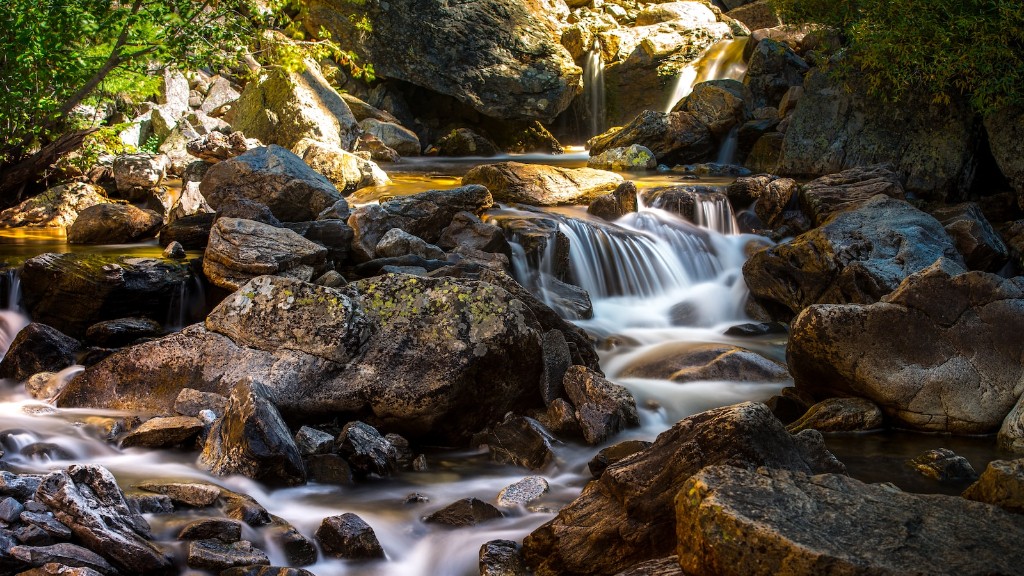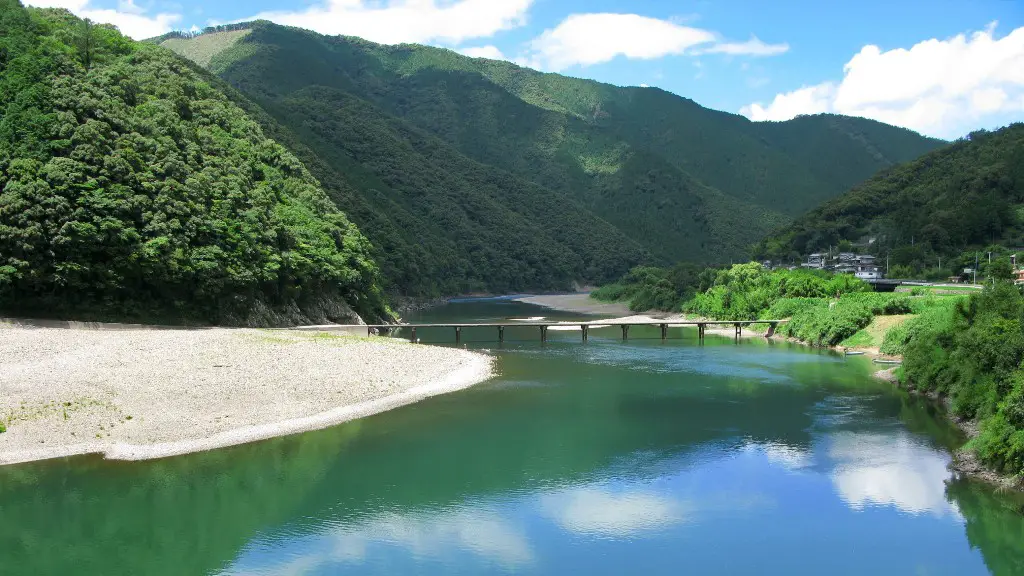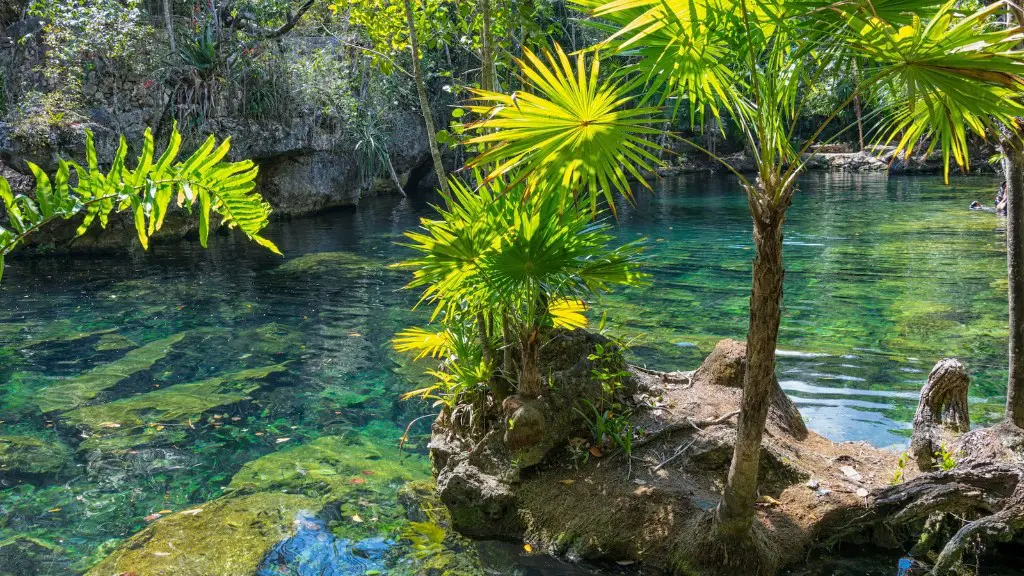People have asked the question: Can you drink water from the Mississippi River? To answer this, it is important to understand the history and ecology of the river system as a whole.
The Mississippi River is the second longest river in the United States. It runs from northern Minnesota, through 10 states and empties into the Gulf of Mexico. It is considered the largest drainage basin in North America, influencing the lives of over 18 million people who depend on it for drinking water, floods, agriculture, and other recreational activities.
As with any water system, there are potential pollutants that can contaminate the Mississippi River in certain areas and make the water unsafe for human consumption. These pollutants can come from a variety of sources such as agricultural runoff, industrial activity, and sewage treatment.
Biological testing by the US Geological Service of the Mississippi River has found a variety of toxins in the water, including pesticides, heavy metals, and hazardous chemicals that can not only be dangerous, but toxic to humans if consumed in large quantities.
Since the types and levels of pollutants can vary from one location to another, the Environmental Protection Agency (EPA) has established several standards for water quality along the river, including requirements for bacteria levels, pH, and dissolved oxygen.
Though the EPA does set limits for pollutants in the Mississippi River, it is not advisable to drink directly from the river as there is no sure way to know that the water is safe to consume. Additionally, health experts advise against consuming any untreated water, as it can contain bacteria or viruses that can cause illness.
In summary, can you drink water from the Mississippi River? It is not recommended, due to the potential of the water being contaminated by pollutants. It is important to take caution and always use treated water for consumption.
Impact of Pollutants on Ecosystems
Water pollution in the Mississippi River can have drastic impacts on the health of plant, animal, and human life that is associated with it. Pollutants like herbicides, pesticides, and fertilizers can seep into the water, damaging the fragile ecosystems of the river. The aquatic life that calls the Mississippi River home can suffer greatly if these pollutants are not contained and mitigated.
Fish in polluted water may experience an increase in liver or egg abnormalities, physical deformity, or reproductive detriment due to the toxins and contaminants in their environment. Studies have also found a direct correlation between water quality and fish populations, with areas of higher water pollution showing much lower fish numbers due to the contaminated habitat.
Additionally, the aquatic plant species that grow in the Mississippi River may be damaged as well, creating an imbalance in the food web. Plants help keep the river system balanced providing for other organisms, serving as habitats for fish and oxygen production for the animals and humans that depend on it.
In regard to human health, the EPA closely monitors the water quality of the Mississippi River, testing for dangerous bacteria and chemical contaminants. There can be a direct health risk to humans from consuming the water, as well as recreational activities such as swimming and fishing, as it may contain too many contaminants to be safe for human contact.
Laws and Regulations
The US Federal Government is responsible for establishing and enforcing laws to protect the Mississippi River and its inhabitants. The Clean Water Act of 1972 is a major law that sets limits on how much water pollution can be released into the water ways, and provides guidelines for water quality throughout the Mississippi River. The goal of the law is to protect the safety of the river and its species and ensure that the water remains clean and habitable for future generations.
In addition to the Clean Water Act, the EPA also has regulations that outline how a business or factory must treat and dispose of their waste water before releasing it into the river. These regulations provide a level of accountability for businesses to ensure that the river is not put at risk by their activities.
Governments at state level also have the ability to enforce their own regulations depending on the risk that a particular river poses. For the Mississippi River, both federal and state governments recognize the importance of protecting the watershed from adverse activities and work together to prevent water contamination.
Local governments play a role as well by educating their citizens about the importance of keeping the water clean. There are also several organizations that have made it their mission to protect the Mississippi River and its inhabitants, such as the Friends of the Mississippi River, the Missouri River Relief, and the Lower Mississippi Riverkeeper. These organizations help coordinate clean-up efforts and promote the health of the river by educating the public.
What Can be Done
Though it is a large and complex task, individuals can help by being aware of activities around the Mississippi River that could contribute to contamination and take steps to prevent it. Actions like reducing runoff from lawns and gardens, avoiding the usage of too many fertilizers, pesticides, or herbicides when gardening, and properly disposing of trash and waste are all effective measures that can be taken to help protect the river.
In addition, raising awareness about the importance of keeping the river clean and healthy is another important step. By spreading the message, more people will be conscious of their actions and make choices that help protect the watershed for future generations.
Finally, citizens can contact and support organizations dedicated to protecting the Mississippi River, such as taking part in clean up events and fundraisers. This type of support is crucial to the preservation of the river and its inhabitants.
Public Education and Citizen Science
As water quality in the Mississippi River is a critical element of the health of the ecosystem and its inhabitants, it is important for the public to be educated about the impacts their actions have on the river and how to take steps to keep the river clean and healthy.
Educational programs have done a great job of increasing public knowledge about water pollution and its effects. Many groups have also started to carry out Citizen Science initiatives, which allow the public to participate in their own research and collect data on their experiences with the river. This type of data is invaluable to organizations as it can be used to inform policies and increase public awareness.
In addition, local governments have implemented Water Conservation Programs to help mitigate water waste and protect the health of the river. Through these programs, locals can implement measures in their homes and yards that reduce the amount of water they use and keep water pollution levels lower in the river.
Finally, governments have also started to encourage sustainable practices in local businesses. This includes implementing waste reduction strategies, using efficient equipment and technologies, and providing education and training to businesses on water saving strategies.
Conclusion
The Mississippi River is an invaluable resource for the US and its citizens and it is important for all to understand the effects that our actions have on the health and wellbeing of the watershed. By taking steps to reduce runoff, improve waste disposal and management, and support organizations dedicated to preserving the river, citizens can make a difference in protecting the Mississippi River for future generations.





